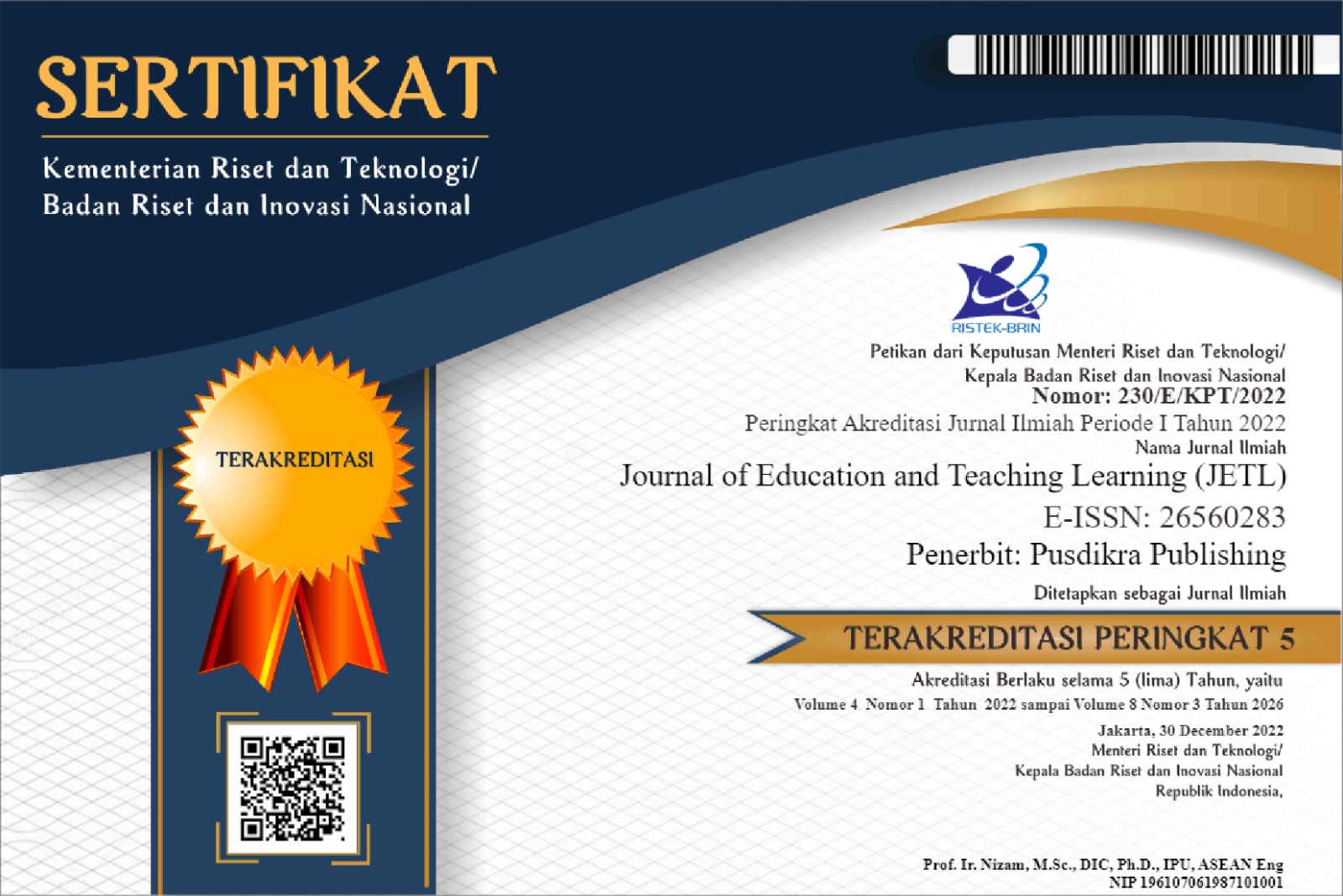Collaborative Supervision of Elementary School Supervisors and Principals
(Case Study at SDN 1 Batu Kuta Narmada, West Lombok Regency)
DOI:
https://doi.org/10.51178/jetl.v4i1.448Keywords:
Principal, Collaborative, SupervisionAbstract
Supervision is a form of supervision carried out in elementary schools as a form of quality control in the implementation of education. Supervision activities can be carried out by the principal and collaborate with school supervisors so that the results of supervision are of higher quality. The purpose of the study was to determine the impact of the collaborative supervision of supervisors and principals. The research method is qualitative description through case studies. The participants were teachers of grades 1 to 6 and teachers of sports subjects. The research was conducted at SDN 1 Batukura Narmada, West Lombok. Data were collected through the process of observation and interviews. The data analysis technique was carried out through the stages of data reduction, data presentation, and drawing conclusions. The results showed that the school administration and the implementation of the learning process had been prepared by the teachers quite well. However, the process of preparing thematic lesson plans still faces obstacles. The results of this study can be seen in the impact of improving the quality of education and the quality of education in elementary schools. In addition, the form of cooperation between the principal and the supervisor is one way at SDN 1 Batukura Narmada shows the level of participation in building the quality of education.
Downloads
Published
How to Cite
Issue
Section
License
Copyright (c) 2022 Journal Of Education And Teaching Learning (JETL)

This work is licensed under a Creative Commons Attribution-ShareAlike 4.0 International License.




